
MENUMENU
TALK TO AN EXPERT
Special Hours: 7AM – 6PM PST
TALK TO AN EXPERT
Special Hours: 7AM – 6PM PST
An RV battery inverter is a device that converts the 12-volt DC (direct current) power stored in your RV’s batteries into the 120-volt AC (alternating current) power used by most household appliances and electronics.
If you want to dry camp in your RV—meaning camping without electrical hookups—an RV battery inverter makes it possible to use things like your coffee maker, microwave, laptop charger, or television anywhere you travel. Many RVs still don’t come with an inverter installed. So, understanding what they do and when you need one can help you get the most out of your RV setup.

RVers want to bring the comforts of home wherever the road leads. From making coffee to charging laptops, running a hair dryer, or keeping your fridge cool, most modern amenities require 120V AC power. This is the same as your household outlets. But here’s the catch: your RV’s battery system naturally provides 12V DC power. That’s where an inverter comes in.
In short:
With a quality inverter and a robust battery bank, you can disconnect from the grid and enjoy reliable power anywhere your RV takes you.
While RV battery inverters make off-grid living far more comfortable, there are some important downsides to consider before you install or rely on one:
Inverters are not 100% efficient. Every time they convert DC power from your batteries to AC power, some energy is lost as heat. Most modern inverters are about 85–95% efficient. But, that still means you lose a small percentage of your stored energy during the conversion process.
Even when you’re not running any appliances, many inverters use a small amount of power just to stay on. This is known as “standby” or “idle” draw. Over time, this can drain your batteries if you forget to turn the inverter off when not in use.
The more AC devices you run, the faster you’ll deplete your battery bank. Running high-wattage appliances like microwaves, coffee makers, or air conditioners through your inverter can use a lot of energy in a short amount of time, especially if your battery bank is small.
High-quality inverters, especially pure sine wave models, can be a significant upfront investment. The cost increases if you need a larger capacity inverter to handle multiple or high-power appliances.
Installing an inverter—especially a larger unit wired into your RV’s AC system—can be complex. It often requires careful planning, proper wiring, and sometimes professional installation to ensure everything is safe and up to code.
(Don’t worry, though. Our Tech Support team is standing by here in Reno, NV. We will help you get connected with a certified installer or answer questions!)
Inverters generate heat as they operate, which can be a concern in small or poorly ventilated spaces. Overheating can reduce inverter efficiency and lifespan.
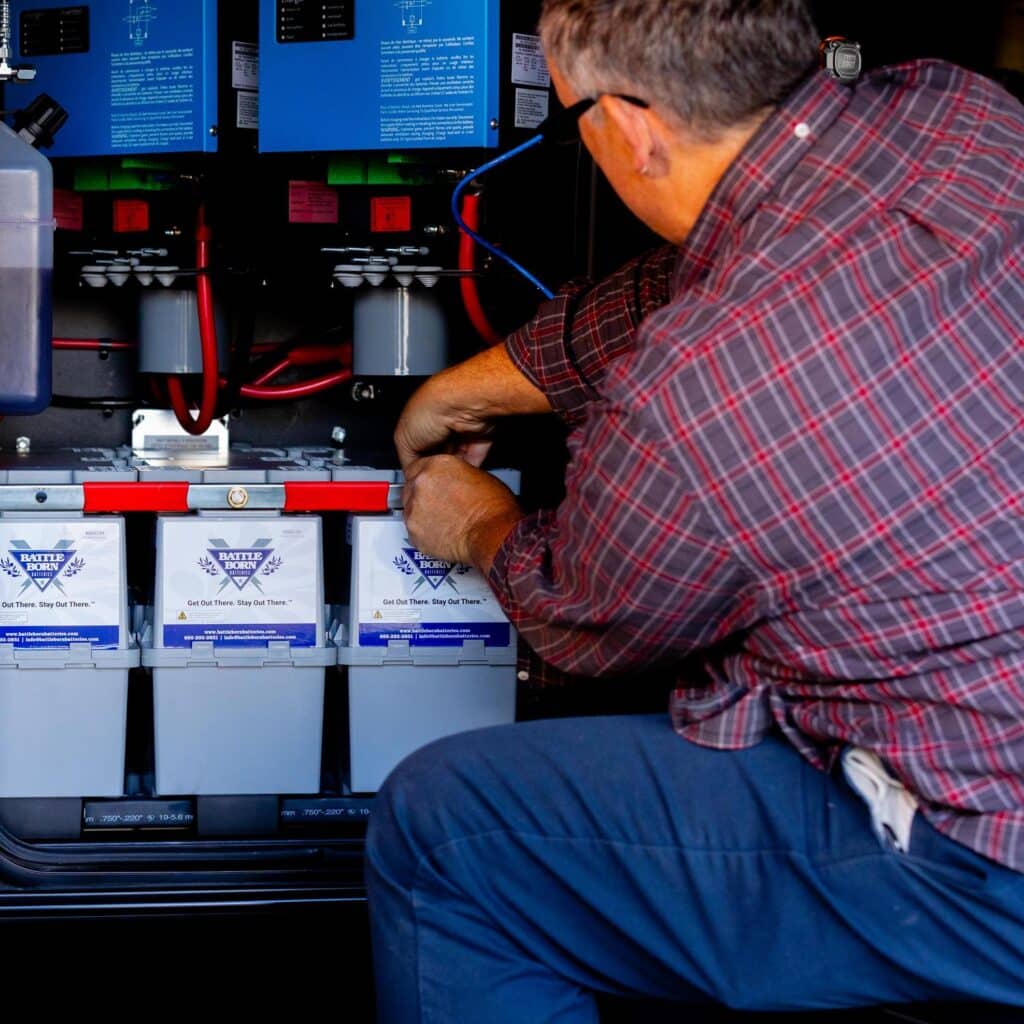
Again, an RV battery inverter takes the 12V DC (direct current) electricity stored in your RV’s batteries and transforms it into 120V AC (alternating current) power.
Here’s how it’s done:
RV inverters come in different voltage inputs (12V, 24V, 48V) and outputs (120V or 240V). Most RVers in North America stick with 12V input/120V output, but 24V and 48V systems are not uncommon.
It’s important to note:
Tip: Learn more about current by reading What Are Amps (And Amp-Hours) And Why Do They Matter?
Electricity is the movement of electrons through a conductor, like a wire. This movement is called “current.”
In DC (Direct Current) power, the electrons always move in the same direction through the electrical circuit. With AC (Alternating Current) power, the direction the electrons flow alternates very quickly. In the US, the direction changes 60 times every second. We refer to this as 60 hertz (Hz).
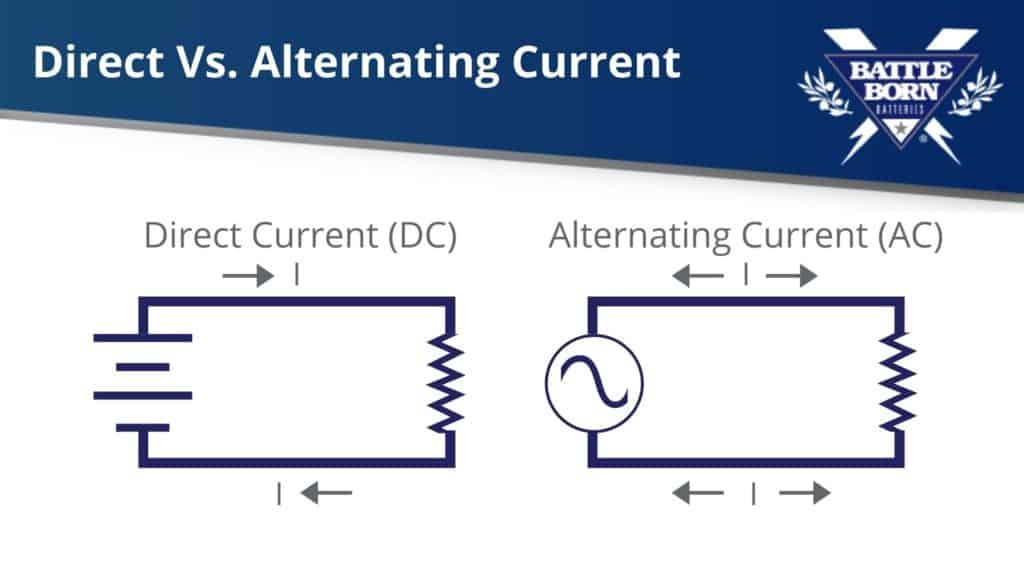
An RV has both AC and DC circuits. The DC circuit will usually be 12 volts, which is the same as your battery voltage. In the US, the AC circuit will be 120 volts at 60 Hz. Both circuit types are easy to identify, so you shouldn’t mix them up.
AC circuits are connected to electrical sockets, like in your house. DC circuits look like the auxiliary power port in your car or a USB outlet. If your RV has LED lights, they’ll also be powered by the DC circuit.
We’ve established that an RV battery inverter changes the 12 volt DC power from your RV batteries to 120 volt AC power.
By contrast, an RV converter “converts” the voltage from 120 volt AC power to 12 volt DC power. An RV converter allows you to use AC shore power to run any of your devices that need DC power (such as LEDs, RV appliances, and small electronics) without relying on your batteries. You’ll also need a converter to use shower power to charge your 12-volt battery system.
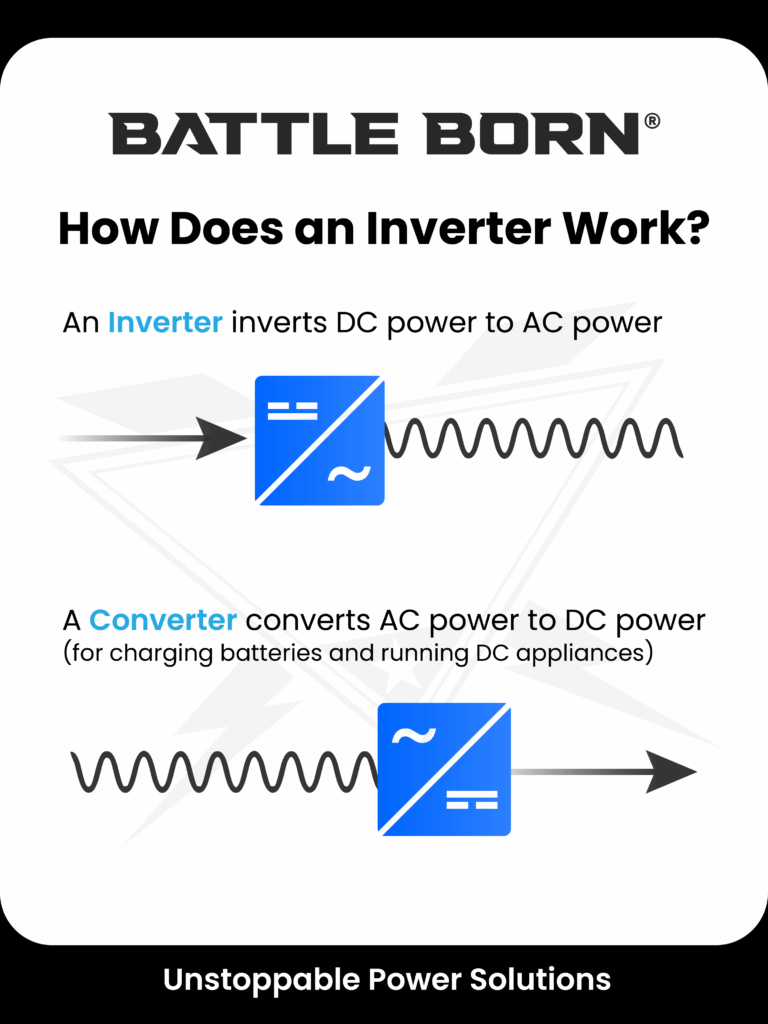
Not all inverters are the same. Depending on your RV, marine, or off-grid power needs, you’ll find several different types that convert and manage electricity in different ways. Understanding these inverter types helps you choose the right setup for your Battle Born Battery system and ensure maximum efficiency, reliability, and comfort wherever you travel.
There are two different types of RV battery inverters – pure sine wave and modified sine wave. The main differences between them are:
As we discussed earlier, the electron flow in an AC circuit switches directions 60 times every second. However, this doesn’t happen instantly. Instead, the signal looks like a sine wave.
The diagram below compares the output signals from a pure sine wave inverter to a modified sine wave inverter. Let’s take a closer look at each option.
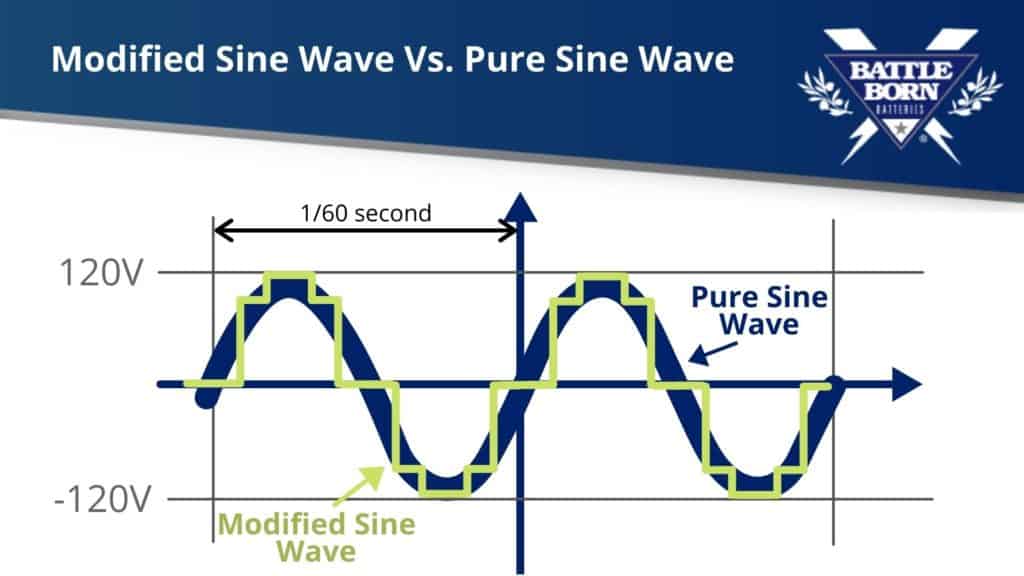
As you can see in the comparison above, the pure sine wave inverter produces an output that is nearly a perfect sine wave, hence the name.
The output from a modified sine wave inverter is choppier and can often cause problems for appliances that use AC motors (like a microwave) and sensitive electronics. Even if your devices run on a modified sine wave (and most will), they will likely be less efficient and may have a shorter lifespan.
The main drawback to pure sine inverters is their initial cost. However, over time, the rougher signal from a modified sine inverter can cause your devices to wear out sooner than they typically would. If you end up needing to replace expensive electronics (like a computer), you’ll likely be better off spending a little more upfront and buying a pure sine inverter.
An inverter-charger combines two functions in one unit: it acts as both an inverter (DC to AC) and a charger (AC to DC). This means it can not only power your RV’s AC loads from your batteries, but also recharge those same batteries when you’re connected to shore power or a generator.
Inverter-chargers like the Victron MultiPlus and Quattro are popular with Battle Born users because they simplify installation and system management while offering powerful charging profiles for lithium batteries.
🔎 Discover the ways an inverter-charger can revolutionize your mobile lifestyle.
A hybrid inverter takes things a step further. These units integrate solar, battery, and grid power into one smart system, automatically deciding where to draw power from and how to charge most efficiently.
Hybrid inverters are perfect for RVs, off-grid homes, or marine systems using solar panels and shore power interchangeably. Products like the Sol-Ark line and Victron’s GX-enabled systems are great examples of this technology in action.
Inverters are designed in two basic ways—Transformer-Fed (LF) and Transformerless (HF)—and the difference matters for safety and performance.
👉 Transformer (LF) vs. Transformerless (HF) Inverters: Here’s the Difference
For larger systems or higher power demands, multiple inverters can be run in parallel or stacked together. This setup allows two or more units to share the load, increasing total output and providing redundancy. So, if one inverter fails, the system can keep running.
Victron’s MultiPlus and Quattro models can be programmed to operate in parallel or split-phase configurations. This offers flexibility for both 120V and 240V systems.
A split phase inverter outputs both 120V and 240V AC power. This is the same type of power supplied to North American homes. These systems are used when you need to run true 240V appliances like a residential dryer, well pump, or EV charger.
While most RVs and boats only require 120V power, certain luxury rigs and off-grid properties benefit from split phase setups for high-load appliances. Battle Born users often use Victron or Sol-Ark systems to achieve this configuration.
If you’re planning to use a lithium battery instead of a lead-acid battery, most inverters will work fine. If you plan to use an inverter charger combo, you’ll need an inverter that supports lithium batteries. This is because the charging circuit for a lead-acid battery is very different from that of a lithium battery.
Before buying an inverter or charger for your lithium battery system, please contact your battery manufacturer to get their recommendation on the best options available. (Our Battle Born Tech Support can be reached at 855.292.2831!)
It is pretty straightforward to determine what size RV battery inverter you need. Inverters are sized by their power output which is measured in watts.
Most devices and appliances will have a power rating on them in either watts or their current draw in amps. Since the inverter is sized in watts, if you have a device that only lists the current draw in amps, you’ll need to convert to watts. To convert from amps to watts, multiply the amp rating by 120.
Amps x 120 = Total Watts
Once you know the power consumption of all of your devices in watts, simply add them together to get the total amount of power you need from your inverter.
Since some appliances draw up to twice their rated wattage when starting, you’ll want to choose an inverter with a 15-20% higher output wattage than your total. For example, if you calculated 1,550 watts total, you’ll likely want to get a 2,000-watt inverter.
👉 Check out our in-depth guide for sizing your RV Inverter.
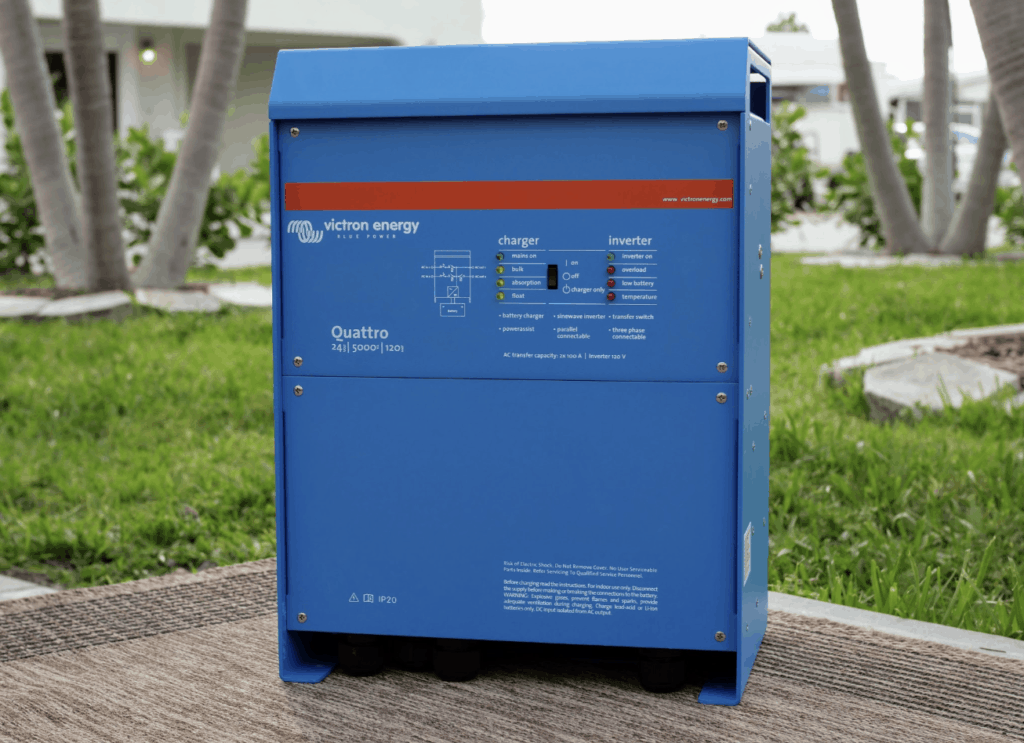
An RV battery inverter is a wonderful thing! It allows us to disconnect from shore power and head out away from the crowds without giving up the amenities of home.
Now you can use the information above to help pick out the best inverter for your needs so you can get out and enjoy all of the places your RV can take you. Get out there, stay out there!
A: An inverter in an RV converts the 12-volt DC power stored in your batteries into 120-volt AC power, which is the standard electricity used by most household appliances and outlets. This lets you run things like microwaves, laptops, coffee makers, and TVs off your battery power when you aren’t plugged into shore power.
A: While it’s technically possible to leave your inverter on all the time, it’s usually not recommended if you’re trying to conserve battery power. Most inverters draw a small amount of power even when nothing is plugged in (called “standby” or “idle” draw), which can slowly drain your batteries. It’s a good practice to turn the inverter off when it’s not needed.
A: This depends on the size (amp-hour rating) of your battery, the efficiency of your inverter, and how much power your appliances are using. As a rough estimate, a single 12V 100Ah Battle Born lithium battery can provide about 1,000 watt-hours (1 kWh) of usable power. For example, if you run a 100-watt appliance, it could last around 8–10 hours (factoring in inverter losses). Higher power appliances will drain the battery much faster.
A: Yes, an inverter will drain your RV battery, both when it’s powering appliances and, to a lesser degree, even when it’s just turned on but not actively running anything. That’s why it’s important to monitor your battery levels and turn off the inverter when not in use.
A: Most standard RV inverters (especially smaller units) are not powerful enough to run an air conditioner, as AC units typically require a large surge of power to start and a significant amount of continuous power to run. But, it’s not impossible! Running an RV air conditioner on battery power typically requires a large battery bank and a high-capacity inverter (usually 2,000 watts or more), plus careful planning to avoid draining your batteries too quickly. If you want to learn how to do this, read this article!
We know that building or upgrading an electrical system can be overwhelming, so we’re here to help. Our Reno, Nevada-based sales and customer service team is standing by at (855) 292-2831 to take your questions!
Also, join us on Facebook, Instagram, and YouTube to learn more about how lithium battery systems can power your lifestyle, see how others have built their systems, and gain the confidence to get out there and stay out there.
Shop Best Sellers
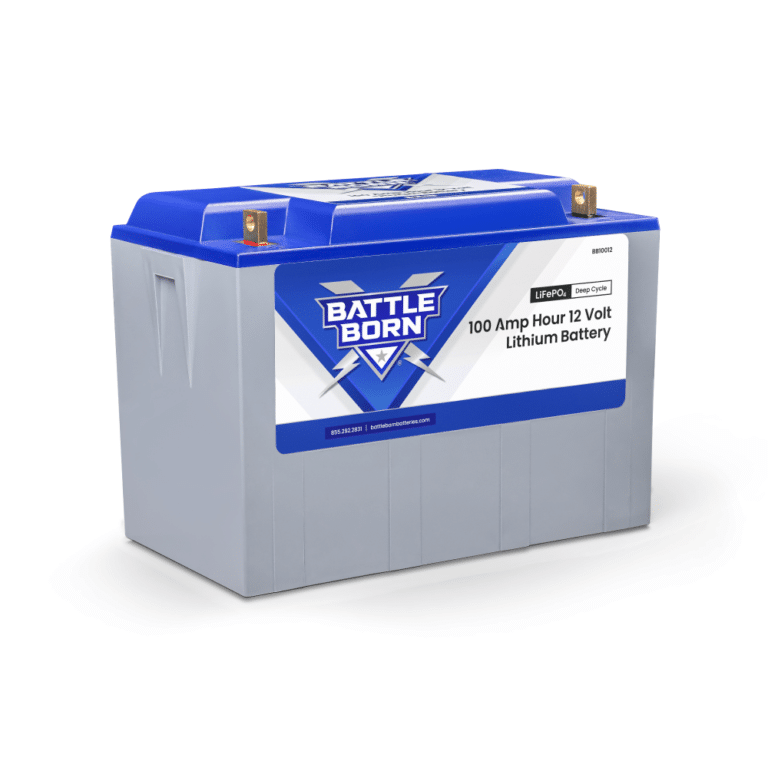
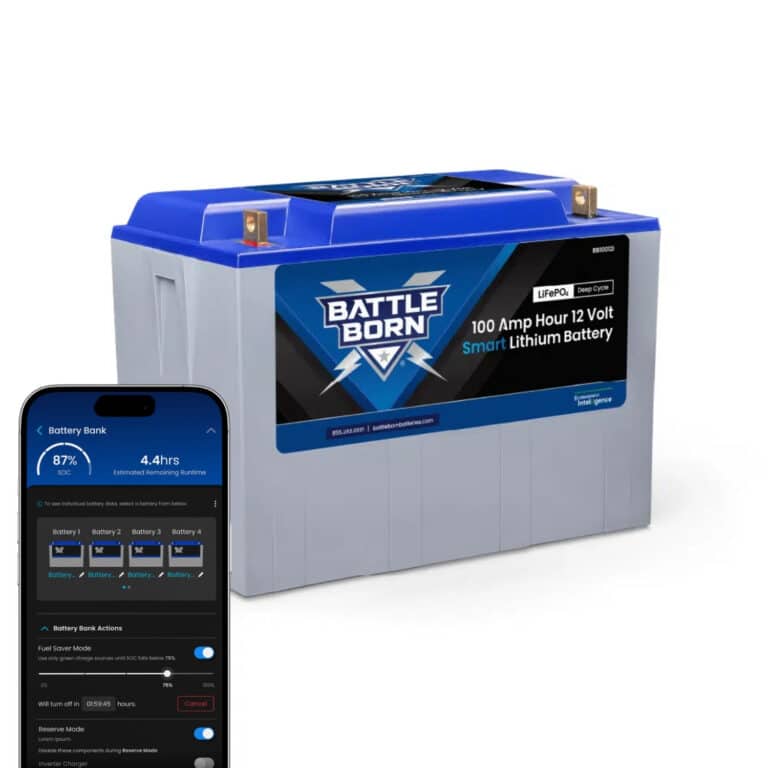
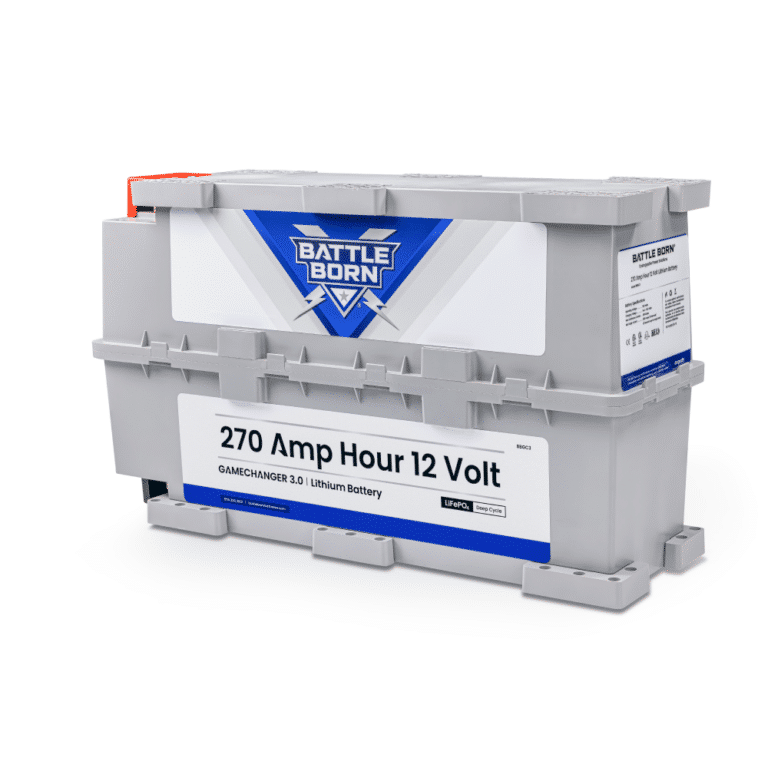
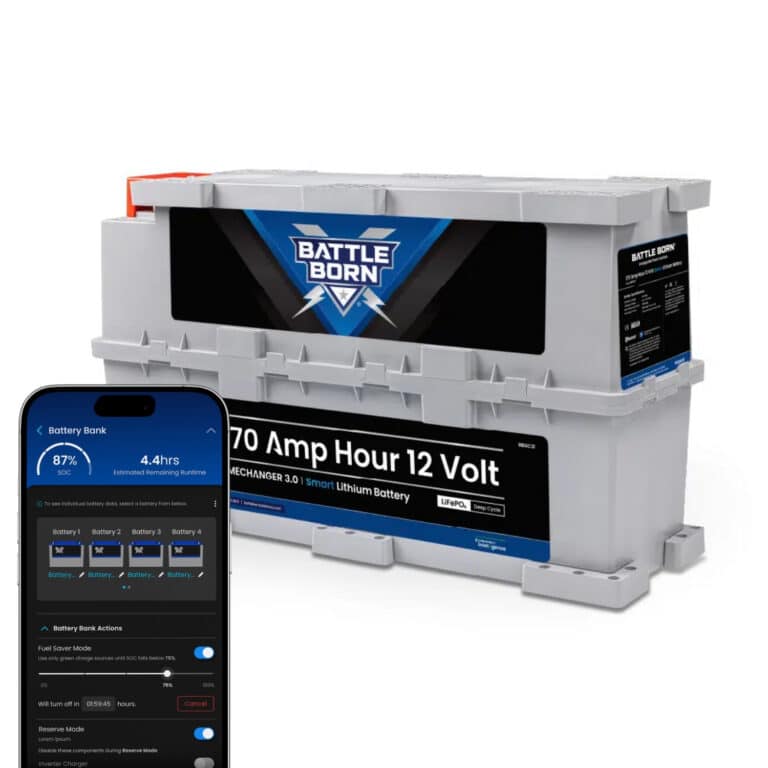
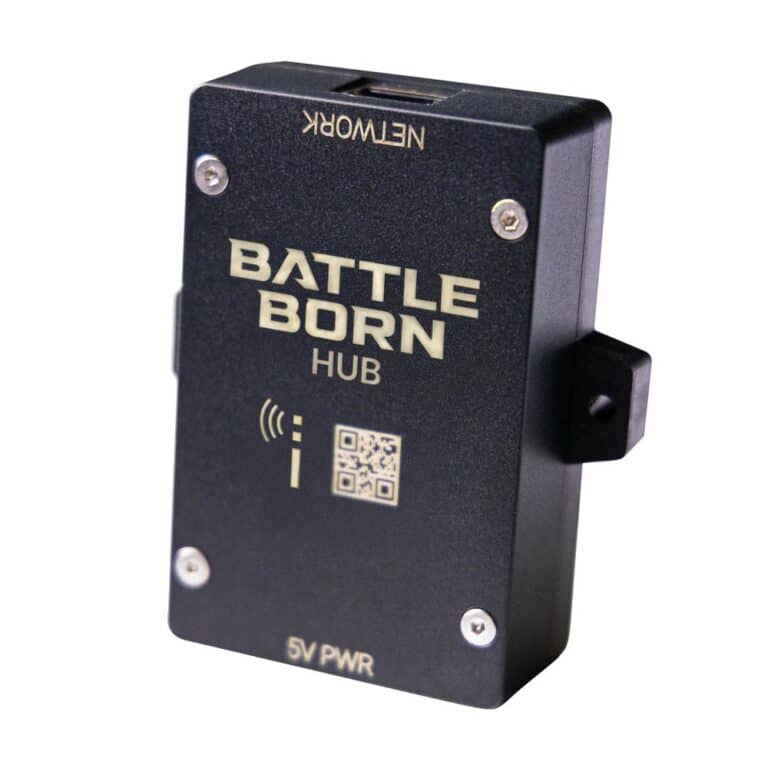
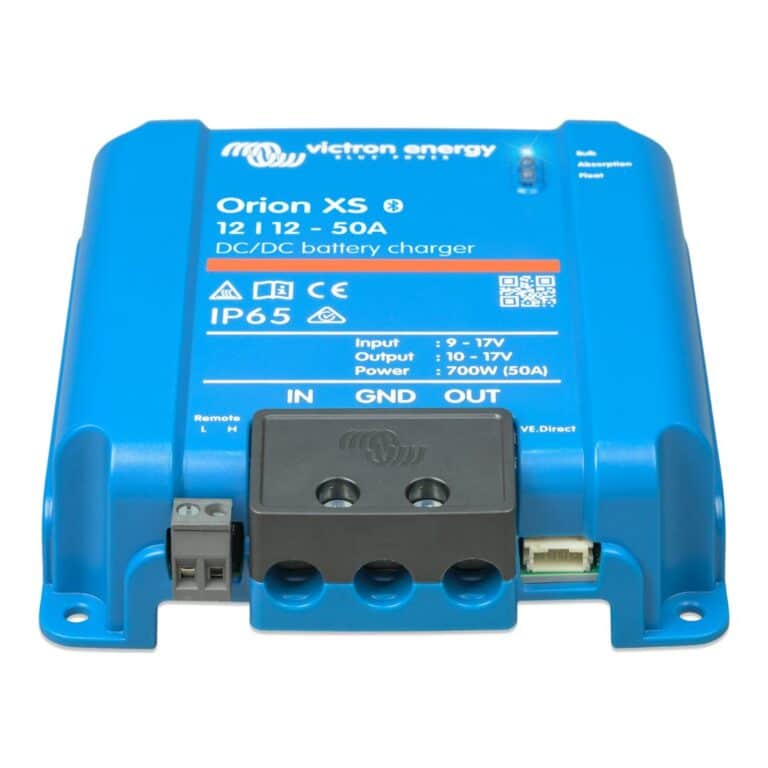
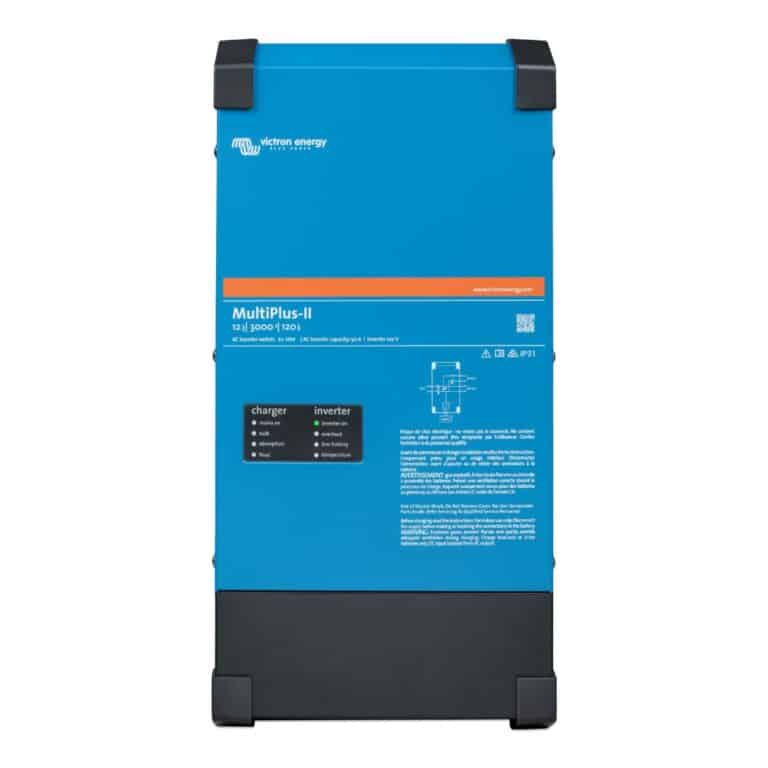

Ask a technical specialist now at 855.292.2831
Stay in the Know
5 thoughts on “What Is An RV Battery Inverter?”
I apologize for not making contact yet. I started with an email a few days ago and Darreck left me a message and I’m almost ready to get back to him. I have two surgeries this month (eyes) with two weeks between them so I’m out of commission for the most part. We have definitely decided to use BB batteries +. Give me a few more days and I’ll be ready to call. Thanks – Andy
What video(s) do your suggest on how to install a Victron 2000w inverter in a system that has two Battle Born batteries in an Airstream Basecamp 20?
Thank you!
Hi Allan, thanks for reaching out and thanks for your patience. Our team recommends videos from Explorist.Life to assist with any installations you may have.
Hello I recently purchased a battery system and I’m in the process of installing it. There was a small black/red wire that came with the 3000 multiplus I purchased from you. What is that wire for how does it connect and is it necessary for installation? Thanks
Kevin L
Great explanation of RV battery inverters! I didn’t realize how crucial they are for maximizing my battery life and performance. Thanks for breaking it down so clearly!